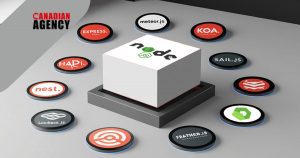The IT development approaches have changed over the previous few decades, but the overall SDLC (Software Development Life Cycle) perspective remains the same. It begins with collecting and comprehending requirements and ends with product testing and delivery. While the initial steps are crucial for creating a user-friendly product, the last stages are essential for winning over the trust of all users.
In this article, Let’s discuss what software testing is, why we need it and the differences between manual and automated testing, comparing their features, benefits, and use cases to help you make informed decisions about the testing strategy for your project.
What is Software Testing?
Software testing is a process of evaluating a software application’s functionality, performance, and quality. It involves executing the software to uncover defects, verifying that the software requirements are met, and ensuring it performs as expected. Test cases are designed to simulate various scenarios, and the outcomes are compared to desired results. Testing encompasses different types, such as unit, integration, system, and acceptance testing, to ensure a thorough examination of the software’s behavior and features.
Why Software Testing?
In most cases, testing often needs more attention throughout software development. When compared to SDLC, testing is more reliable. Taking things lightly and conducting testing in artificial conditions will unquestionably have a negative impact on the entire project and result in testing failures.
As a result, it’s essential to check that the software is clear of bugs and that the users are utilizing all of its features before releasing it on the market because If you don’t take the project seriously and test it in realistic settings, it will likely fail during testing. Now that you know the requirement for quality testing, let’s discuss the testing methods —manual testing and automation testing—that can be used to validate software products.
What is Manual Testing?
Manual testing is the traditional approach to quality assurance where human testers execute test cases without using automation tools. This method relies on the tester’s intuition, observation, and judgment to identify defects, validate functionalities, and assess user experience. Manual testing is particularly effective in scenarios requiring exploratory testing, usability evaluation, and ad-hoc testing.
How Manual Testing Works?
It involves a human tester interacting with the software application, both from a functional and non-functional perspective, to identify bugs, ensure the software meets specified requirements, and verify its overall quality. Here’s how manual testing works, along with its key points and reasons for its importance:
1. Test Planning and Design: Test planning involves defining the testing scope, objectives, and strategies. Test cases are designed based on requirements, specifications, and user scenarios.
2. Test Case Execution: Testers execute test cases manually, step by step, following predefined test scripts. They interact with the software as end-users would, inputting data and checking the outputs.
3. Functional Testing: Testers verify if the software functions as intended and meets specified requirements. They validate that buttons, links, forms, and other functionalities work correctly.
4. User Interface (UI) Testing: The UI is evaluated for consistency, layout, and responsiveness. And testers ensure that the user interface is user-friendly and intuitive.
5. Usability Testing: Testers assess the software’s overall user experience (UX). Furthermore, they identify usability issues, such as confusing navigation or unclear instructions.
6. Regression Testing: After changes are made to the software, testers retest previously tested functionalities to ensure that new changes haven’t introduced bugs in existing features.
7. Exploratory Testing: Testers explore the software without predefined scripts, looking for unexpected defects and scenarios. This approach can uncover issues that scripted testing might miss.
8. Non-Functional Testing: Performance, security, and compatibility testing are performed manually to validate non-functional aspects of the software.
9. Defect Reporting: When testers identify errors, they document the issues with detailed steps to reproduce them. These reports are handed over to developers for resolution.
10. Test Closure: Once testing is complete, a test summary report is prepared, outlining the testing activities, results, and any remaining issues. Then, this report helps stakeholders make informed decisions about the software’s readiness for release.
When to Use Manual Testing?
Manual testing is beneficial in several scenarios:
- Early Development Stages: When the software is rapidly evolving or lacks stable features
- Usability and UX Testing: To evaluate user interface, navigation, and overall user experience.
- Exploratory Testing: For creatively uncovering unexpected defects and scenarios.
- Ad-Hoc Testing: When test cases are undefined or quickly changing.
- Short-term Projects: When the project timeline is tight, automation setup might consume more time.
- One-Time or Infrequent Testing Needs: For small projects or features with limited use.
- Complex Scenarios: When automation would be time-consuming due to intricate test cases.
- Dynamic Environments: In cases with ever-changing conditions or interactions.
- Non-Functional Testing: Evaluating human perception, emotions, and judgment.
- Innovative Features: Testing new or innovative features without investing in automation.
- Early Feedback: To provide quick input before formal automation is set up.
Manual Testing Pros and Cons
Pros:
- Testers can use intuition to discover intricate issues that automated scripts might miss.
- Human testers can assess user-friendliness and real-world user experience effectively.
- It is ideal for short-term projects or when automation setup is not justified.
Cons:
- Executing test cases manually can be time-intensive, limiting the test coverage.
- Manual testing is prone to errors due to fatigue, oversight, or misinterpreting test cases.
- It is not practical for large-scale projects with a multitude of test cases.
What is Automation Testing?
Automation testing involves using specialized tools and scripts to automate test cases and verify software functionalities. It speeds up the testing process, enhances accuracy, and enables efficient regression testing. Automation testing is ideal for repetitive tasks and long-term projects.
How Automation Testing Works?
Unlike manual testing, where human testers execute test cases, automation testing relies on scripts that simulate user interactions and validate whether the application behaves as expected. The following text explains how automation testing works, along with its key points and reasons for its importance:
1. Test Planning and Design: Similar to manual testing, a clear test plan is essential for automation testing. Test cases are designed and scripted in a programming language supported by the chosen automation tool.
2. Test Script Creation: Testers write scripts that emulate user interactions, such as clicking buttons, entering data, and navigating the application. These scripts define the steps needed to perform the test.
3. Test Script Execution: Automation tools execute the scripted tests on the software application. The tools simulate user actions, record results, and compare them against expected outcomes.
4. Regression Testing: Automation is beneficial for performing repeated tests, such as regression testing after code changes. Scripts can quickly retest a large number of previously validated scenarios.
5. Data-Driven Testing: Automation tools often support data-driven testing, allowing scripts to run with different input data sets. Also, this enhances test coverage and identifies potential defects under various conditions.
6. Parallel and Cross-Browser Testing: Automation can be used to execute tests simultaneously on multiple browsers or devices. Moreover, it ensures compatibility and consistent behavior across different environments.
7. Performance and Load Testing: Automation tools can simulate multiple users concurrently, helping to assess the application’s performance under heavy loads.
8. Continuous Integration/Continuous Deployment (CI/CD) Integration: Automation testing can be integrated into CI/CD pipelines to provide rapid feedback on code changes and promote early bug detection and smoother releases.
9. Reporting and Analysis: Automation tools generate detailed test reports, including pass/fail status and any errors encountered. Further, these reports aid in identifying and addressing defects efficiently.
When to Use Automation Testing?
Automation testing is suitable for various scenarios:
- Regression Testing: Repeatedly testing unchanged functionalities to ensure updates don’t introduce new errors.
- Large-scale Projects: It would be time-consuming to execute numerous test cases manually.
- 24/7 Testing: When testing needs to occur beyond working hours.
- Performance Testing: Analyzing the software’s responsiveness and stability under varying conditions.
- Parallel Testing: To perform tests concurrently on multiple platforms, browsers, or devices.
- Data-Driven Testing: Testing the same functionality with multiple data sets to assess different scenarios.
- Stable Applications: When the application’s features are well-defined and less likely to undergo frequent changes.
- High-Quality Requirements: When the software requires high levels of accuracy and precision.
- Non-Functional Testing: For evaluating aspects like performance, security, and compatibility.
- Complex Scenarios: For intricate test cases that are difficult to execute manually.
Automated Testing Pros and Cons
Pros:
- Automation accelerates the testing process and executes test cases faster than manual testing.
- Test scripts can be reused for different versions or builds of the software, saving time and effort.
- Ideal for ensuring that new changes do not adversely affect existing functionalities.
Cons:
- Setting up automation tools and creating scripts requires upfront time and resources.
- Automated tests might need more subtle visual and usability issues that human testers can identify.
- Test scripts must be updated regularly to align with changes in the application.
Comparison Between Manual Testing vs. Automation Testing
Here’s a detailed comparison between manual testing and automation testing across various aspects:
1) Approach
– Manual Testing: Testers manually execute test cases, simulating real user interactions.
– Automation Testing: Tests are executed using scripts and automation tools that simulate user actions.
2) Speed and Efficiency
– Manual Testing: Relatively slower due to human involvement and repetition.
– Automation Testing: Faster and more efficient for repetitive and large-scale testing.
3) Test Coverage
– Manual Testing: Limited test coverage due to time and resource constraints.
– Automation Testing: Wider test coverage, especially for regression and repetitive tests.
4) Repeatability
– Manual Testing: Prone to human errors and variability in results.
– Automation Testing: Consistent and repeatable results, reducing human errors.
5) Initial Setup and Maintenance
– Manual Testing: Minimal setup; focus on designing and executing test cases.
– Automation Testing: Requires initial setup of scripts and automation infrastructure and ongoing maintenance.
6) Skillset
– Manual Testing: Requires a deep understanding of the application and its functionalities.
– Automation Testing: Requires programming skills to write and maintain scripts.
7) Human Judgment
– Manual Testing: Testers can apply human judgment to assess usability and user experience.
– Automation Testing: Lacks human judgment for aspects not covered by scripts.
8) Exploratory Testing
– Manual Testing: Ideal for exploratory testing, where testers creatively explore the software.
– Automation Testing: Less suitable for exploratory testing due to its scripted nature.
9) Usability and UI Testing
– Manual Testing: Effective for evaluating user interface, layout, and user experience.
– Automation Testing: Limited in assessing usability and user experience.
10) Initial Cost
– Manual Testing: Lower initial cost, as automation infrastructure doesn’t require setting up.
– Automation Testing: Higher initial cost due to tool selection, setup, and scripting efforts.
11) Long-Term Cost
– Manual Testing: Higher long-term cost due to manual execution, especially for repetitive tests.
– Automation Testing: Lower long-term cost as scripts can be reused and run frequently.
12) Maintenance of Tests
– Manual Testing: Relatively easier to update manual test cases.
– Automation Testing: Requires regular maintenance to keep scripts up-to-date with application changes.
13) Flexibility
– Manual Testing: More adaptable to changes and unpredictable scenarios.
– Automation Testing: Better suited for stable and repetitive scenarios.
14) Non-Functional Testing
– Manual Testing: Effective for subjective, non-functional aspects (e.g., user perception).
– Automation Testing: Suitable for objective, non-functional tests (e.g., load testing).
In short, both manual and automation testing have their strengths and weaknesses. The final choice depends on project requirements, timeline, budget, complexity, and the balance between the approaches to achieve thorough testing and maintain software quality.
Can Automation Testing Replace Manual Testing?
While automation testing offers numerous advantages, it cannot completely replace manual testing. Automation is excellent for repetitive tasks, regression testing, and achieving broader coverage. However, human testers bring creativity, intuition, and the ability to identify complex issues that automation might overlook. The ideal approach involves a combination of both manual and automation testing to leverage their respective strengths.
Conclusion
In the dynamic world of software development, the choice between manual and automation testing is not binary. Each approach has its merits and fits specific scenarios. Manual testing excels in exploratory and usability testing, and leveraging human intuition. On the other hand, automation testing offers efficiency, consistency, and scalability. A well-balanced testing strategy that incorporates both manual and automation testing is crucial to achieve comprehensive software quality. Understanding the strengths and limitations of each approach empowers teams to make informed decisions, ultimately leading to a robust and reliable end product.
At Canadian Software Agency, we have a dedicated team of SQA Engineers who work around the clock to ensure that the final projects delivered to the client are error-free. If you want to avail of our services, contact us now.







